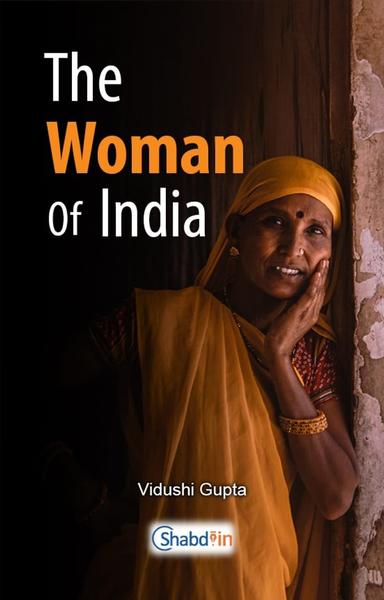 This article is published in paid section. You will need to buy this to be able to read this.
This article is published in paid section. You will need to buy this to be able to read this. A Man's Love
28 April 2022
 This article is published in paid section. You will need to buy this to be able to read this.
This article is published in paid section. You will need to buy this to be able to read this. Give response
Jugal Kishore Sharma
Benefits of Multigrain - How can We are diet plan with whole grains,bean and lentils Present study was undertaken for development of gluten free processed products i.e. cookies and pasta by incorporation of gluten-free ingredients in different proportions. Gluten free raw ingredients i. e. finger millet (FM), pearl millet (PM), soya bean (SB) and groundnut (GN) were assessed for their nutritional characteristics. Results of nutritional analysis concluded that these ingredients are a rich source of crude fibre, protein, fat and ash or mineral content. Different formulations were prepared depending on variation of ingredients in each formulation. In case of cookies, the formulation containing all the four ingredients i. e. FM, PM, SB and GN in equal proportion (25% each) was liked most and scored highest on 9-point hedonic rating scale. Whereas, in case of steamed pasta (PS) and steamed as well as fried pasta (PF) products, the most acceptable formulation was the one containing 30% PM, 35% FM and 35% SB flour. Also, PF was liked more than PS as frying increased the palatability of fried products. Although, all formulations of both products were moderately acceptable having organoleptic score more than 7.0 as per assessment on 9 point hedonic rating scale but, the formulations containing higher amount of pearl millet were scored slightly lower as compared to other formulation mainly due to the lower values for sensory parameters such as colour, flavour and texture of such products. Incorporation of nutritious gluten free ingredients increased the content of essential nutrients such as crude fibre, crude fat, crude proteins and mineral or ash contents to a significant (P≤0.05) extent as compared to control.Multigrain bread is a type of bread prepared with two or more types of grain. Grains used include barley, flax, millet, oats, wheat, and whole-wheat flour, among others. Some varieties include edible seeds in their preparation, such as flaxseed, quinoa, pumpkin seeds, and sunflower seedsThis product has whole wheat flour as its primary ingredient, the first ingredient is wheat flour, you won't be getting much in the way of whole grains. The Cleveland Clinic states that wheat flour is actually 75 percent white flour, or refined flour, and 25 percent whole wheat flour, so you're not getting much in the way of whole grains. If you find a bread that is labeled 100 percent whole grain, that means the ingredients are entirely grains with complete nutrients, as Harvard Health states.and enriched wheat flour as its secondary ingredient. Other grains, which compose less than 2 percent, include barley, flaxseed, millet and wheat bran.While enriched multigrain breads don't contain the fibrous, chewy bran coating of whole grains, they don't have the added nutritional benefits either. So when you look for bread, if you're seeking extra fiber, vitamins and minerals, look for whole grain ingredients in order to get multigrain bread benefits. A different type of multigrain bread from Ahold USA, with enriched wheat flour as its primary ingredient, contains 120 calories and one gram of fiber, according to USDA FoodData Central. This is why it's important to read labels of multigrain bread. Multigrain bread calories may be slightly more, but as Harvard Health points out, you feel more full when you eat it. The main kicker hurting multigrain's chances is that multigrain bread's health benefits are really up in the air depending on which grains are used. Unless the label of the multigrain bread specifies that it is 100 percent whole wheat or 100 percent whole grain, it may still be made primarily from white flour The benefits of this type of bread, when made from whole grains, include not only fiber, but more vitamins than you get in bread made from enriched flour. Whole grains provide added B vitamins, iron, copper, zinc, magnesium, antioxidants and phytochemicals, Harvard Health states. When looking at calorie content, multigrain bread calories are often equivalent to those of other types of bread. But the fiber content is generally higher. According to USDA FoodData Central, one slice of supermarket company Ahold USA multigrain bread contains 100 calories and 3 grams of fiber.Antioxidants protect your cells from damage, notes the U.S. National Library of Medicine. Phytochemicals are found naturally in plants and may have a role in preventing disease. Chickpeas- Helps in weight loss, improves digestion. Flaxseeds- High fibre, brainfood, protects bones, antioxidant rich. Oats- Good for the heart, lowers cholesterol levels, prevents skin irritations. Ragi- Excellent source of Iron, magnesium and manganese- helps fights anaemia, high in protein, helps build stronger bones. Maize- Supplies essential amino acids, boosts our nervous system functioning, helps maintain eye health. Foxtail Millet (Jawar)- Boosts immunity, improves heart health. Pearl Millet (Bajra)- High in dietary fiber, helps balance body’s amino acid profile. Barley- High in fibre, has beta glucose which regulates blood sugar. Soybean- Best source of plant based protein, essentials minerals and vitamins and helps in preventing birth defects. Subscribe to JUGAL’s Newsletter By JUGAL KISHORE SHARMA · Launched 4 months ago Health fitness and diet planning
2 May 2022
Read Book
- Cookery
- Biographical Memories
- Children's Literature
- Comedy-satire
- Comics-Memes
- Education
- Feminism
- History
- Horror-paranormal
- Law & Order
- Love-Romance
- Self Help
- Sports-Sportspersons
- Suspense-Thriller
- Science-Technology
- Travelogue
- Other
- Diary
- Criticism
- Science-Fiction
- Social
- Erotic
- Familial
- Religion-Spiritual
- Craft-Hobby
- Crime-Detective
- Contemporary Stories
- Action
- Astrology
- Animals
- Literature & Fiction
- Trade-Money
- Translation
- Motivational
- Health-Fitness
- Latest Books
- Top Trending Books
- Listed Books
- Printed Edition Books
- Audio Books
- Reviewed Books
- Novel
- Story/ Story collection
- Poem/Poetry collection
- Magazine
- General Books
- Book Competition
- All Books...
Read Articles
- Poem on new year
- Your expectations from 2025
- Social-Emotional Learning
- Memories of 2024
- Daughters and society
- The Future of Artificial Intelligence
- Your views on domestic violence law
- Misuse Of Feminism
- City of dreams
- Coup In Syria
- Importance Of Financial Literacy
- Virtual Reality
- Winter's Morning
- Steps to success
- Loss Of Hopes
- A world without colour
- The curse of child marriage
- Constitution Day
- Fictional Space
- An Incomplete Love Story
- everyday
- Cryptocurrency
- Childhood friends
- First book I ever read
- Cryptocurrency Exchange Script
- lifestyle
- GLOBAL WARMING
- daily life
- Sparking Innovation
- Rainy day
- bet365 clone script
- stake clone script
- Feminism
- Daily_Competetion
- festival
- great men
- modern
- memoir
- ideological
- Detective
- time-period
- Autobiography
- Ideological
- Motivational
- an age
- Erotic
- Originator
- Travel
- Cryptocurrency MLM Software
- All Articles...

















